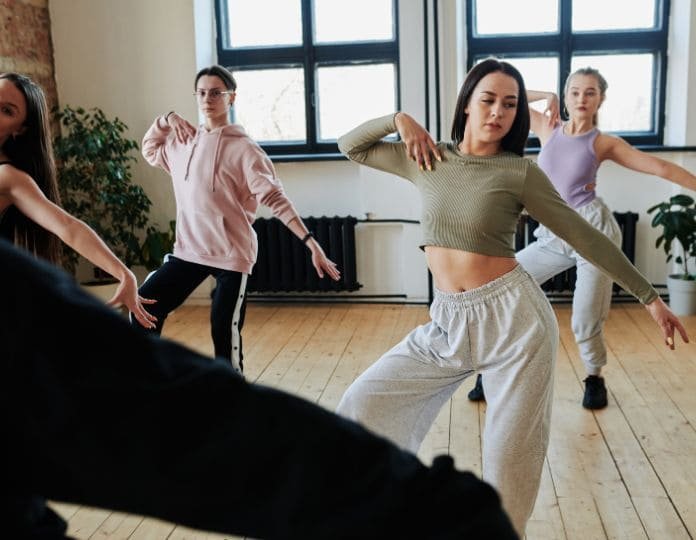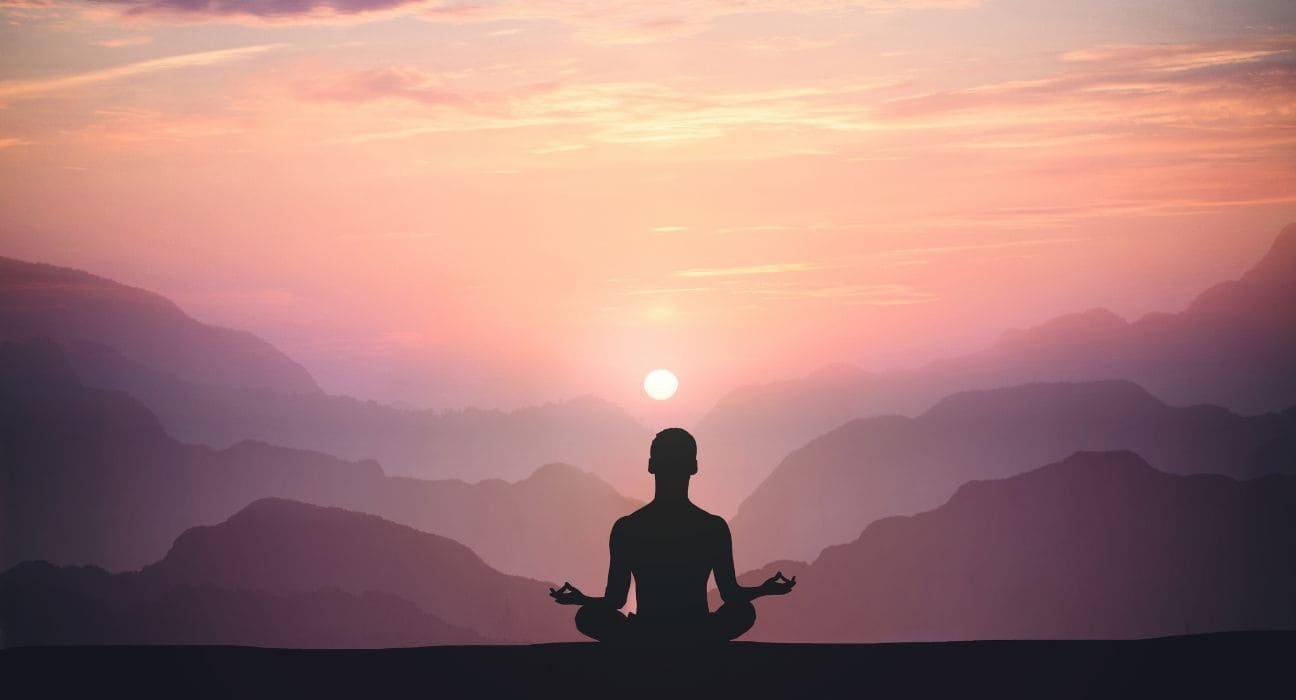Quiet the mind, and the soul will speak
Ma Jaya Sati Bhagavati
This quote represents the core of meditation. What is this core? Well, according to the ancient texts from which meditation was born, it is a practice employed to connect oneself with the innermost parts of their souls. In everyday life, this becomes difficult since our mind is constantly flooded with various thoughts. This noise makes it difficult to listen to the soul. Meditation helps individuals make their mind more resilient and closed off to these noises, at least for an hour, and focus simply within themselves.
Related: How Meditation Changes Your Brain
From when the great Gautama Buddha sat under the Bodhi tree and meditated for 49 days constantly without food or water, and enlightened to its growing popularity now, meditation has become a living tradition which means that it will change over the course of time to better meet the demands and preferences of the now. Looking at the urban landscape now and the innovative minds of our generation, there have been a number of new types of meditation which stay true to the core of the practice while also integrating it to the turbulent times of today. Now, we shall first try and understand the practice of meditation as well as the need of it and then we shall move on to its various types where you can figure out which might suit your best.
Meditation: The Need Of The Hour
Meditation in very simple terms is a practice wherein an individual employs the technique of mindfulness which involves complete concentration onto a certain object or activity and in the most conventional form, the individual themselves. Due to the advent of hustle culture which requires non-stop working, people have been actively looking for a way to step back from the burdening process of ‘having it all’. Let us look at this in more detail.
Related: Hustle Culture: Achieve but at What Cost
- Meditation helps with anxiety: Meditation has been proven to help with anxiety and stress reduction. This happens primarily because meditation helps drive away irrational and overwhelming thoughts.
- Meditation helps with breathing regulation: It also helps regulate breath. In most guided meditations, the instructor has methods of helping individuals alleviate stress by correcting and regulating their breathing patterns.
- Meditation opens the mind: Meditation aids in expansion of mind as you may stumble onto new revelations about yourself and the world. It also helps unclutter your mind which makes space for more valuable knowledge.
- Meditation is a home remedy as well as prescribed treatment: This is a technique that is accessible to all and can be practised from the comfort of your own home. Moreover, it also happens to be a prescribed treatment by various psychologists especially in rehabilitation centres.
- Meditation as a solace: In the fast paced urban life, meditation has become a form of comfort, a solace. It has proven to be a respite for people overburdened with responsibilities and worries about the future.
As you can note from the above points, meditation has emerged as a popular and important activity that all must employ for whatever amount of time that we can. With this wave of popularity, as you might have guessed, people have come up with various ways to meditate as per their needs and style. With the advent of various new techniques, meditation has become more accessible than ever before.
According to Psychologist and Psychotherapist, Iqra Azim, “One of the most transformative practices we embrace is mindfulness. It doesn’t just entail taking a moment to sit quietly or alone; rather, it involves consciously immersing ourselves in the present moment, fully engaged in whatever task is at hand. Mindfulness meditation is about cultivating a heightened awareness of our thoughts, feelings, and sensations as they arise, whether we’re meditating on a cushion or folding laundry. It’s the art of giving our undivided attention and focus to the present moment, regardless of the activity we’re engaged in. Whether we’re washing dishes, walking in nature, or having a conversation, mindfulness invites us to infuse each moment with awareness and presence.”
Here are 10 types of Meditation we are going to explore in this article –
- Breathing Meditation
- Mantra Meditation
- Chakra Meditation
- Body Scan Meditation
- Reflection Meditation
- Dance Meditation
- Transcendental Meditation
- Eating Meditation
- Visualization Meditation
- Nature Based Meditation
1. Breathing Meditation
Perhaps the most common form of meditation is breathing meditation. It essentially involves focusing on your breath and deeply concentrating on each step of the process. Research has shown that with mere regulation of breath, one can reduce anxiety by breaking up the stress response, improve heart rate and even get a better fighting chance against depression! Lady Gaga, the famous singer and songwriter, has been known to practise this form of meditation. During an interview with Oprah Winfrey on her 2020 wellness tour, Germanotta discussed her experience with transcendental meditation. She mentioned, “There are times when I’m in a lot of pain, but when I meditate, it miraculously disappears. It’s truly incredible” (everyday health). We shall entail the steps of it below as well as some of the popular techniques within this form of meditation.
Speaking over what techniques in meditation can best help someone with Anxiety, Poorva Mathur, a Clinical Psychologist, Quotes “As a Psychologist, One can often utilize the Jacobson Progressive Muscle Relaxation Technique (JPMR) with the patients, particularly those experiencing anxiety. This technique has received positive feedback, with patients reporting significant relaxation and relief from muscular tension and rigidity. Stress and anxiety can lead to physiological changes, such as increased heart rate. The JPMR technique effectively addresses these physical manifestations of stress and anxiety by combining relaxation with guided imagery, creating a meditative state that enhances its effectiveness.”
Related: Helpful Breathing Techniques for Meditation
- The purpose is to focus on your breathing: You may choose to practise this form of meditation while standing, sitting or walking. Most people prefer to do this sitting in a cross-legged position.
- From the ease of your own home: This meditation can take place anywhere that you are. Even if you are at your workplace and are getting overwhelmed, you can practise this very easily.
- Overview of the process: Essentially, this involves inhaling, holding your breath and then exhaling. You would be required to focus on this breathing pattern as well as the way your chest expands and falls as you inhale and exhale respectively. During a stress response, this will help regulate your breath and decrease your heart rate.
- The 4-7-8 technique: This is a very popular technique for breath regulation. It involves breathing for 4 seconds, holding the breath for 7 seconds and the exhaling for 8 seconds. Variations of this have the individual say “Om” with the exhalation of the breath.
2. Mantra Meditation
The type of meditation made to boost inspiration and confidence in a person. It basically involves reciting a mantra you support and believe in over and over again until it is internalised and immersed within your soul, more details regarding the procedure are given below. The choice of mantra is totally up to you, it may be a religious one or a motivational one or whatever you may prefer. The only criteria that must be followed is that it must be easy to recite. The steps of this practice are:
- Choose a mantra for recitation: The mantra must be true to you and short with less syllables so that it is easier for recitation. e.g. “I am worthy of love and happiness“, “I am calm and present in the moment”, or ” I am choosing to let go of everything”.
- Choose a place to sit: Get comfortable, take off your shoes, and sit in a comfortable place. Your posture must be at ease but aligning with your spine, the way that it is. No specific rigidity must be imposed and the body must be kept light and flowing.
- Begin with breathing exercises: You must begin by focusing and regulating your breath in order to centre yourself.
- Recite the mantra audibly: Recite your mantra out loud at least 10 or so times. The number may vary according to your preferences. After all, meditation is a highly subjective experience.
- Recite the mantra by your lips: This time, do not use your voice but simply move your lips as you chant the mantra and focus on their movement. Repeat this as many times as you recited them audibly.
- Recite the mantra in your mind. Now, recite the mantra in your mind alone as you attempt to have each word or syllable be completely immersed in your soul.
3. Chakra Meditation
Chakra meditation essentially involves meditation with your seven chakras in focus. The chakras were given in the vedas and this concept dates back to 1500-500 BCE. There are seven chakras which are spread throughout an individual’s body beginning from the forehead all the way down to the area between the thighs. The chakras move upward and all of them correspond to a particular energy. These energies are, respectively from chakra 7 to 1, stability, creativity, personal power, love and compassion, communication, intuition, and finally, enlightenment. The process of this meditation is given below:
- Which is your chakra in need? This form of meditation requires the individual to know which of the energies one has issues with or feels is blocked, like they are unable to exercise that energy entirely.
- Know Your purpose. Before you begin the session, you must know which chakra you are planning to focus on and need cleared up. You should know the method you are going to adopt and the aim of the exercise.
- Become aware of chakras. You must gain knowledge about chakras and this form of meditation before you actually proceed with it. You can achieve this by following guided meditation.
- Journal your journey. Keep a track of the number of sessions you have done alongside the chakras you have focused on in order to know your progress.
4. Body Scan Meditation
This is an exceedingly helpful form of meditation which involves scanning your body through your mind for any pains, injuries or muscle tensions. This should be done with a guide, especially if one is a beginner. The steps are listed below.
- Close your eyes. You must begin with the classic getting comfortable, closing your eyes and focusing on your breathing before you begin.
- Come to the centre of yourself. This exercise can only be carried if you are ready to be completely in tune with yourself.
- Ignore any outside disturbance. Ignore any other noise that may be coming towards you. You may play ocean sounds to help you with this.
- Get in tune with your body. Attempt to connect to your body and tune out everything else. Other thoughts may arise, welcome them but do not embrace them. Then begin noticing all the movements and feelings that arise within your body.
- Focus. You may choose to focus on one part of the body or the entirety of it.
5. Reflection Meditation
Taking the ‘look inward’ side of meditation and putting particular emphasis on it, this meditation involves individuals to ask reflecting questions to themselves in order to get to know themselves more. The steps for this are listed below.
- Centre Yourself. Since this meditation involves asking oneself deep questions that will help one gain insight, one must be completely focused at their core to get the correct answers.
- Begin with breathing. You must begin with the regular breathing exercises which will help you regulate your breath and begin to draw your focus.
- Formulate your question. You can then formulate a question that you would like to ask yourself. Questions could be like “What is my purpose?”, “What must I let go” or, “What challenges have I overcome and how?” and so on.
- Internalise the question. You must continuously repeat the question in your mind as you search its contents for the answer.
- Be patient. This process takes time so you must be patient with the practice and with yourself.

6. Dance Meditation
This might be the one that sounds the most interesting. Similar to the Sema, that is performed in Sufism which involves whirling and spinning while remembering God. This can be seen in the famous song ‘Khwaja Mere Khwaja’ in Jodha Akbar. This happens to be one of the oldest forms of dancing meditation. It involves dancing as you tap into your spirituality and eventually the movements become internalised and you reach an altered state of consciousness. The steps for dance meditation are as follows:
Related: Dance Therapy: Discover Yourself Through Movement
- Pick your dance form. You may choose whatever dance form you are comfortable with, it may just be moving your body in a particular way.
- Loosen Yourself Up! This activity does not have to be rigid so truly express yourself and let your body flow as it wishes to.
- Focus on the movement. You must then focus entirely on your movement. Observe it, feel it. Perceive the way your different parts are moving.
- Lose Yourself in the dance. Eventually, after the focus on the movements, let the focus transfer to yourself as you move away from the dance and enter an altered state.
7. Transcendental Meditation
Transcendence refers to an altered state of consciousness which has been written and perceived in different ways by various scholars and religions. In Hinduism, transcendence refers to when the human soul becomes one with Brahma or the Supreme Being. Transcendental Meditation is a process that was developed by Maharishi Mahesh Yogi. Countless Hollywood celebrities such as Ellen De Generous and Howard Stern have partook in this form of meditation. Certain steps which are accessible for the general public are as follows:
- Sit With your eyes closed. Pick a comfortable spot and let your body relax with your eyes closed.
- Rested Alertness. Your body should be at rest but your mind should be opening and awakening,
- Reciting Mantra. The mantras involved in this form of meditation are not actual words in English language, rather they are mere sounds that help you focus into your consciousness.
- The times. This must be practised for 20-25 minutes twice a day until you start delving into your consciousness.
For more information about this, you must consult the Maharishi Foundation who are experts in instructing this form of meditation.
8. Eating Meditation
Eating meditation or mindful eating is a form of meditation which helps individuals attain a better relationship with food as well as feel gratitude for the food we receive. This has helped a lot of individuals deal with issues of eating disorders and body image issues since the focus is shifted from weight and is put onto the mindfulness of food. Steps for this form are given below:
- Get your food. Get whatever your heart desires although nutritious food is recommended. You can take your food and then be seated comfortably.
- Smell it. Take in the fragrance of your food but do not attempt to guess or predict the flavours you will experience.
- Focus on the texture. Take a bite and hold it in your mouth. Do not chew it, simply observe the texture with your tongue. Eyes may be open or closed.
- Chew but slowly. Now, begin to chew the bite in your mouth. Slowly, as you take in and understand all the flavours and truly savour it.
- Swallow gratefully. As you swallow the bite, focus on its path in your body and how it is nourishing you on the inside.
- Repeat. Repeat these steps until your food is finished. Take as much time as you want with the process.
9. Visualisation Meditation
The green scenery is calming and yet inspiring. You hear the babbling of the river as the clouds shield your eyes from the sun and cool breeze gets woven in your hair. This is visualisation. This form of meditation involves calming the mind and body by imagining peaceful scenarios and immersing oneself in this imagination. This can be done in several ways.
- Pick your ideal scenario. You could be near a lake or in the snowy mountains of the Himalayas, it’s up to you!
- Choose the mood music. This step is optional but you can play sounds that are associated with your scenario in order to feel more immersed with it.
- Sleep meditation. Visualised sleep meditation ensures that you will wake up well-rested and energetic.
- Guided Meditation. Guided visualised meditation has been proven to be exceedingly helpful and beneficial.

10. Nature-Based Mindfulness
Get out of the house! This is a form of meditation that is exceedingly required in these times. Spending the entire day at home in front of television or in the office with your laptop can be extremely detrimental. It is very necessary to get out sometimes and experience nature. Nature-based mindfulness is a form of meditation and a grounding technique which helps people get better acquainted with nature and themselves. Steps are as follows:
- Sit Down in nature. You do not have to go to some exotic place for this, simply sit down a while in the nearest park and practise this.
- Close your eyes and breathe. Close your eyes and begin breathing slowly, then we must focus on your senses.
- Things You Feel. Feel the grass beneath you and note how it feels, also note how the breeze feels in your hair and on your skin.
- Things You Hear. Note the things that you hear, perhaps there are children playing, the trees are rustling and so on.
- Do what you wish! This form of mindfulness is a very subjective experience and depends on every individual’s own way of relating to nature.
The above techniques cater to a variety of interests, you may pick the one you like and start today! Meditation is an activity that will never go to waste and once you start with it, there is no stopping!
References +
- Komariah, M., Ibrahim, K., Pahria, T., Rahayuwati, L., & Somantri, I. (2022). Effect of Mindfulness Breathing Meditation on Depression, Anxiety, and Stress: A Randomized Controlled Trial among University Students. Healthcare, 11(1), 26. https://doi.org/10.3390/healthcare11010026
- Komariah, M., Ibrahim, K., Pahria, T., Rahayuwati, L., & Somantri, I. (2022). Effect of Mindfulness Breathing Meditation on Depression, Anxiety, and Stress: A Randomized Controlled Trial among University Students. Healthcare, 11(1), 26. https://doi.org/10.3390/healthcare11010026
- Fletcher, J. (2023, October 4). How to use 4-7-8 breathing for anxiety. https://www.medicalnewstoday.com/articles/324417
- Psychologs Magazine. (2024, April 10). How meditation changes your brain. Psychologs Magazine | Mental Health Magazine | Psychology Magazine | Self-Help Magazine. https://www.psychologs.com/how-meditation-changes-your-brain/
- Ramananda, S., & Ramananda, S. (2021, October 27). A Step-By-Step Guide to Practicing Mantra Meditation. Yoga Journal. https://www.yogajournal.com/poses/mantra-meditation/
- Chakra Meditation: Balancing Chakras with Mindfulness. (2024, February 26). https://www.anahana.com/en/meditation/chakra-meditation
- Smith, M., MA. (2024, February 5). Body Scan meditation. HelpGuide.org. https://www.helpguide.org/meditations/body-scan-meditation.htm
- Professional, C. C. M. (n.d.). Transcendental Meditation(R). Cleveland Clinic. https://my.clevelandclinic.org/health/treatments/22292-transcendental-meditation
- Mindful eating – headspace. (n.d.). Headspace. https://www.headspace.com/mindfulness/mindful-eating













Leave feedback about this